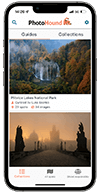5 top photo spots in Grand Teton National Park
Grand Teton National Park, Wyoming is undoubtedly worthy of its reputation for being one of the best US road trip destinations, along with nearby Yellowstone National Park. And the good news is that we have photo location guides to both! Here are 5 top photo spots in Grand Teton National Park that you won’t want to miss.
1) John Moulton Barn, Mormon Row
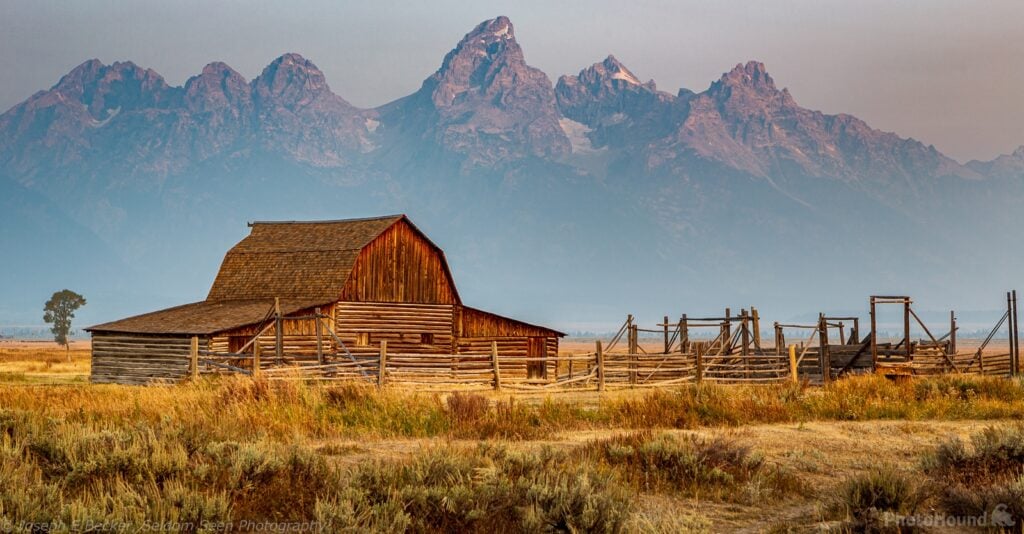
Sunrise the is the time to be on Mormon Row to photograph the two Moulton barns. The sun will first light up the mountains behind the barns, eventually reaching down to the barns themselves.
Depending on what composition you want and where you set up, the John Moulton barn can be photographed with wide-angle through medium telephoto lenses. However, this is a popular spot so don’t set up too close to the barn so as to get in the way of other photographers.
A large bison herd is often found in the area of the barns, and with luck you might capture a composition with both the barn and the bison. Pronghorn antelope are also common in the area.
2) Snake River Overlook
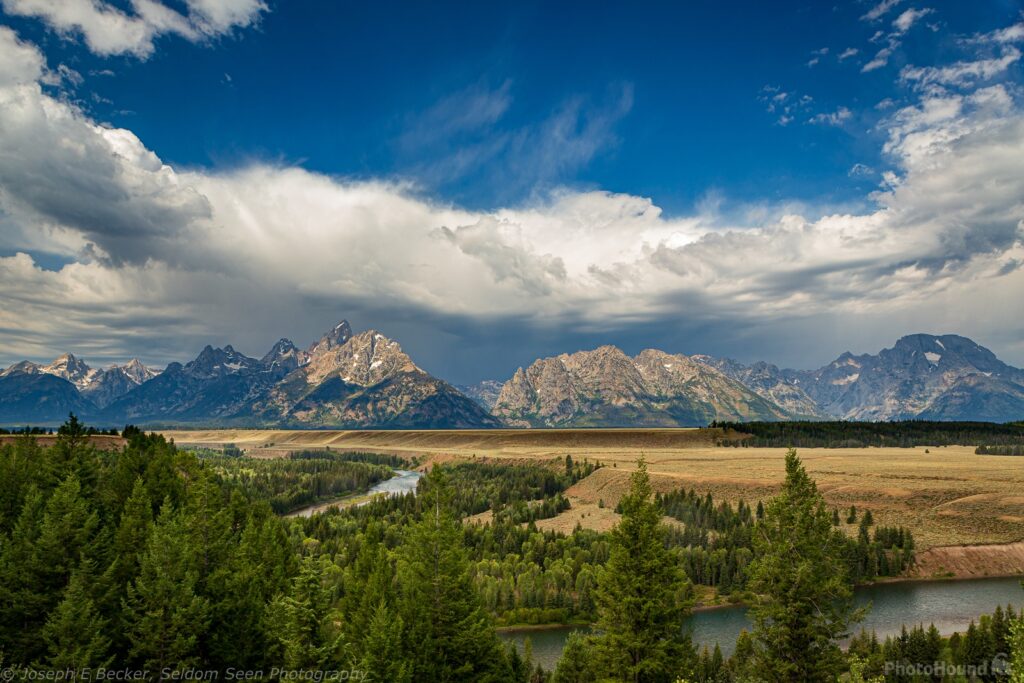
This spot was made famous by Ansel Adams when he shot his widely known ‘The Tetons and Snake River’ here in 1943. If you are familiar with his work, you will immediately note that the trees have grown taller since 1943 and much less of the river is visible. Still, viewing the Tetons and the Snake River from this location is not to be missed.
At sunrise, the light can be magical at this location, as alpenglow colors the mountains. Arrive extra early if you do come for sunrise as fellow photographers will also be scouting for the best spot to plant their tripods! Luckily, the light is still generally good until about mid-morning. At other times of day, obtaining a good shot from here will depend on the clouds and the dynamics they create with the light and mountains.
3) Wildlife at Antelope Flats
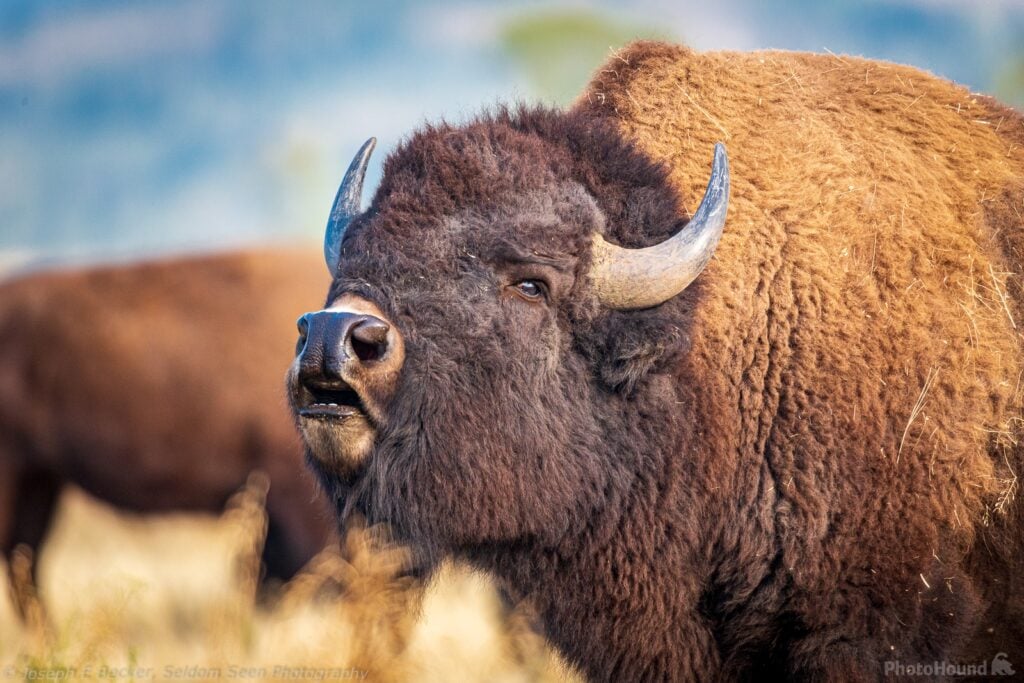
The Antelope Flats area of Grand Teton National Park is a haven for wildlife. There is a large resident bison herd that roams the area as well as smaller herds of pronghorn antelope. There are also deer and the occasional moose in the area.
Four roads make a large rectangular route around Antelope Flats. A good plan to find wildlife in the area is to drive this circuit on Antelope Flats Road, Mormon Row, Gros Ventre Road, East Boundary Road back to Antelope Flats Road. You can also try Warm Ditch Road, which crosses through the southern portion of the rectangle.
It’s best to have a long telephoto lens at the ready, even though you may get quite close to the bison herd. In fact, you may find yourself in the middle of the herd. In that case, shoot from your car, as bison can be dangerous – never be tempted to approach them.
4) Oxbow Bend
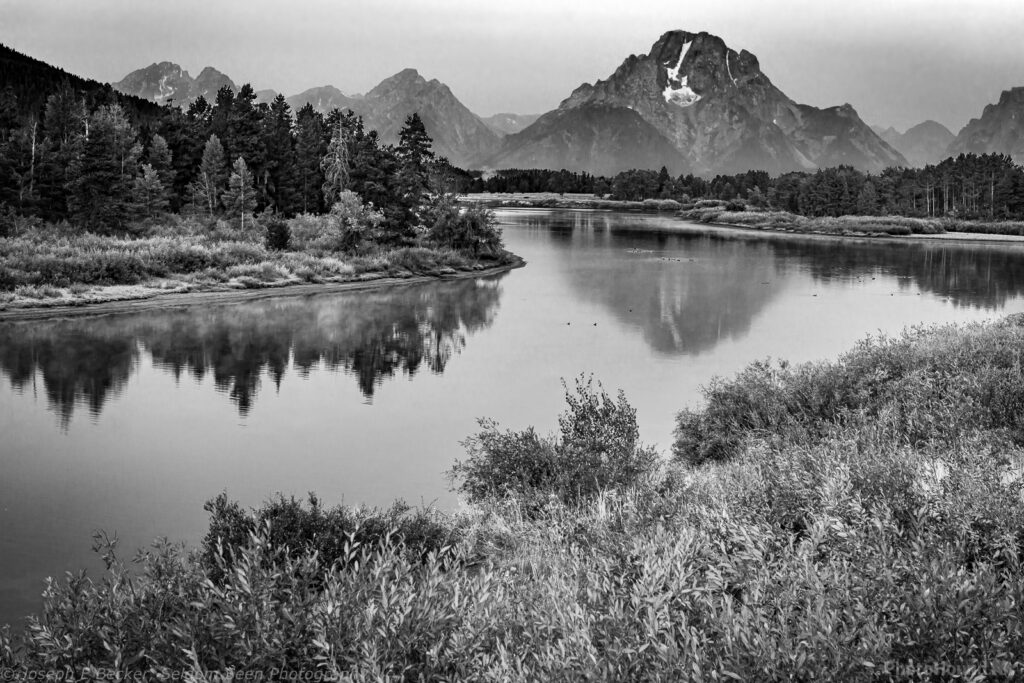
If not the most photographed spot in Grand Teton National Park, Oxbow Bend is certainly in the top two or three. Here, an oxbow side channel of the Snake River provides quiet water that offer reflections of Mount Moran and the other northern Teton mountains. The spot is also good for wildlife, including pelicans and other waterfowl, sandhill cranes, eagles, elk, moose, bears, and more.
There are many compositional choices here. You can shoot from many spots up by the roadway, or choose from many other spots down by the river. Each location will give a different perspective on the mountains and their reflections.
5) Willow Flats Overlook
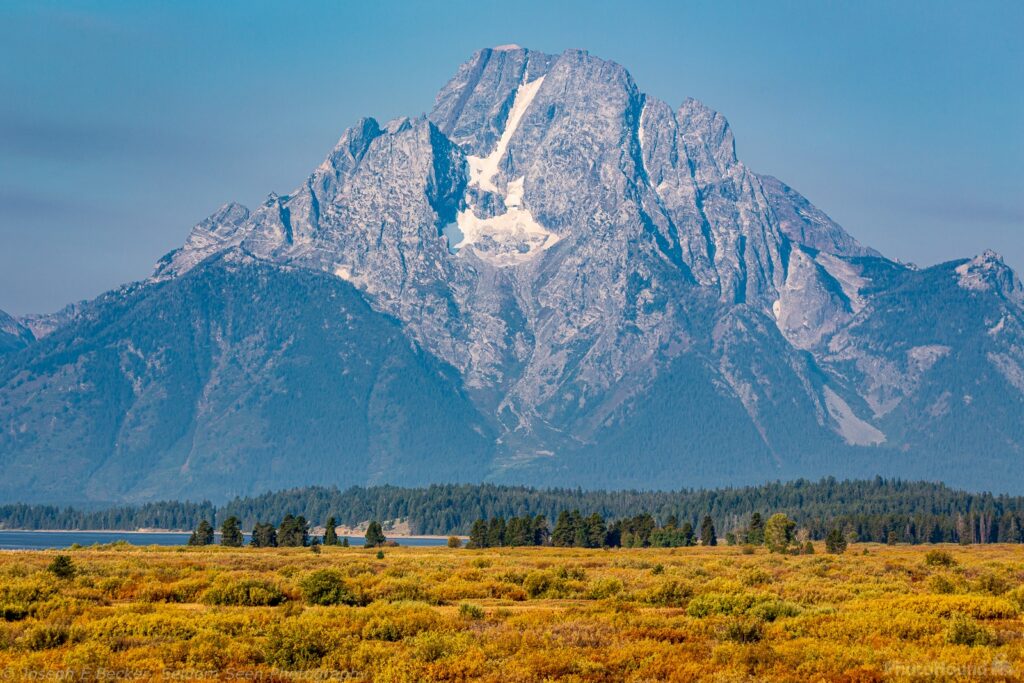
Willow Flats is a broad plain east of Jackson Lake in Grand Teton National Park. It is crisscrossed by three streams and covered in meadows, marshes, willow tickets, and other small brush. The area is a haven for wildlife including elk and bear. Above Willow Flats is an overlook just off the highway providing a good wildlife viewing spot as well as views of Jackson Lake and the Teton range.
The vista is broad, and to capture the entire width you will need to stitch together a panorama shooting with a normal to short telephoto lens. To capture more intimate portraits of the mountains, try a medium telephoto lens.
The light here will be best at sunrise through early morning and the best time to spot wildlife will be early morning or around sunset.
Responsible photography in the park
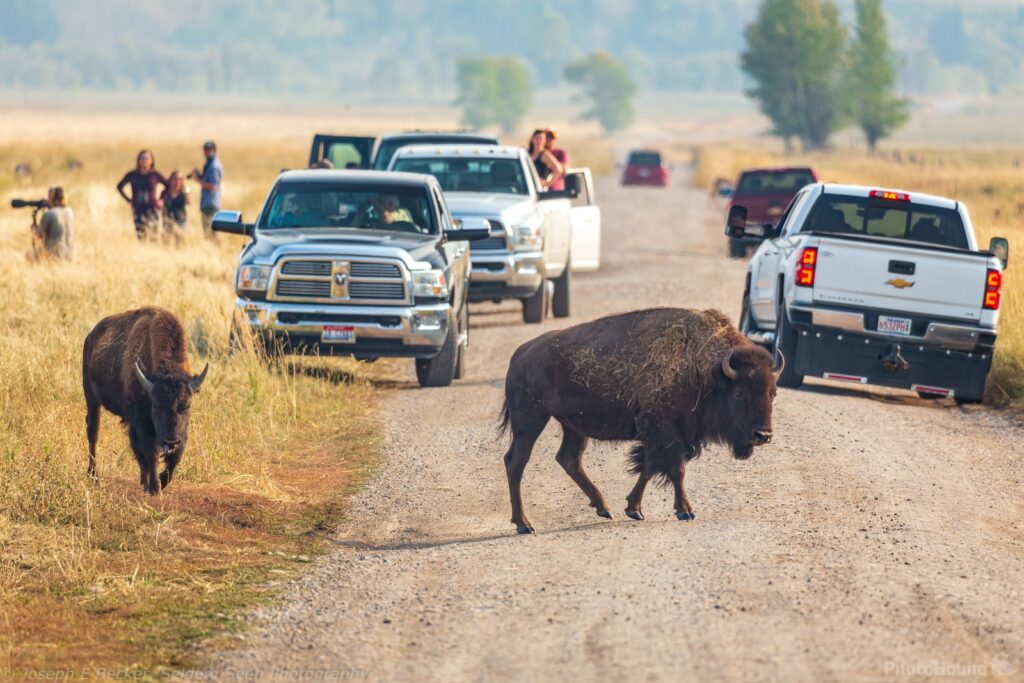
Grand Teton National Park is part of the Greater Yellowstone Ecosystem, which according to the National Park Service, is one of the largest nearly intact temperate-zone ecosystems on Earth. As such, photographers should take extra responsibility to care for this special place. Be aware of your potential impact on the landscape and ecosystem as you drive, hike, and photograph.
Please take care to follow all rules, regulations, and guidelines, even if that means not getting the shot. For example, some locations are signed for no off-trail access due to overuse and sections of some roads are marked as no parking or stopping (including along Moose-Wilson Road, one of the best places to see wildlife in the park). Respect these rules, leave your camera in its bag, enjoy the view, and go elsewhere to do photography.
Maintain your distance from wildlife; they can be dangerous. Additionally, when wildlife are close to the road, traffic jams can occur. Try to pull off the road and watch for traffic driving around the parked cars. Never be attempted to approach them or lure them nearer with food. This is strictly forbidden and dangerous
Follow our Responsible Photography Principles that relate to national parks and areas of pristine natural beauty. Check out more tips on how to photograph responsibly with our partners, Nature First Photography.
Follow PhotoHounder Joe Becker for more of his photo spots and PhotoHound location guides.
Further Photography Tips
Use the PhotoHound Guide to Grand Teton National Park curated by Joe Becker to plan your ideal itinerary.
Moving on to Yellowstone National Park? You’ll want to check out our Guide to Photographing Yellowstone curated by Lewis Kemper.
https://www.nps.gov/grte/index.htm
Official Grand Teton National Park Website
http://www.tetonhikingtrails.com/
Information on more than 45 hikes in the park complete with photos, difficulty rating, and elevation profiles
https://www.jacksonholechamber.com/about-jackson-hole/web-cams/
Jackson Hole live webcams
https://www.fs.usda.gov/main/btnf/home
Website of the Bridger-Teton National Forest (located immediately east of Grand Teton National Park)
